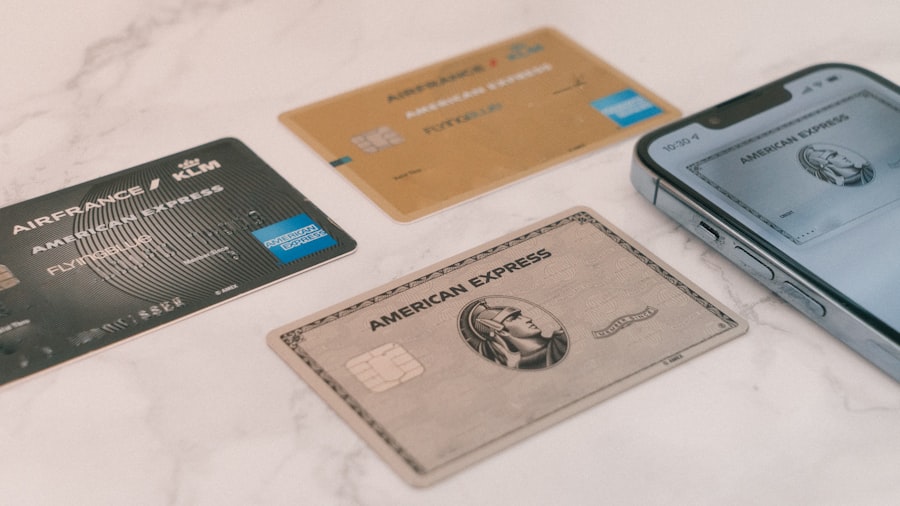Credit card eligibility is a crucial aspect of personal finance that determines whether an individual can obtain a credit card and under what terms. Lenders assess various factors to evaluate an applicant’s creditworthiness, which ultimately influences their decision to approve or deny a credit card application. Understanding the nuances of credit card eligibility is essential for consumers who wish to navigate the financial landscape effectively.
It is not merely about having a good credit score; it encompasses a broader range of criteria that lenders consider when evaluating potential cardholders. At its core, credit card eligibility revolves around the applicant’s financial history, including their credit score, income level, and existing debt obligations. Credit scores, which typically range from 300 to 850, serve as a numerical representation of an individual’s creditworthiness.
A higher score indicates a lower risk to lenders, making it more likely for the applicant to be approved for a credit card with favorable terms. However, credit scores are not the only determinant; lenders also look at income stability and employment history to gauge an applicant’s ability to repay borrowed funds. Understanding these elements can empower consumers to make informed decisions about their credit applications.
Key Takeaways
- Credit card eligibility is determined by factors such as credit score, income, and existing debt.
- Factors affecting credit card eligibility include credit history, income, employment status, and existing debt.
- Ways to improve credit card eligibility include paying bills on time, reducing existing debt, and checking credit reports for errors.
- Tips for maximizing purchasing power with credit cards include choosing cards with rewards and cashback offers, and using them for everyday expenses.
- When comparing credit card offers, consider interest rates, annual fees, rewards programs, and additional perks.
Factors Affecting Credit Card Eligibility
Several factors play a pivotal role in determining credit card eligibility, and understanding these can help applicants position themselves favorably in the eyes of lenders. One of the most significant factors is the applicant’s credit score. A score above 700 is generally considered good, while scores below 600 may lead to difficulties in obtaining credit.
Lenders use this score to assess the risk associated with lending money to an individual. Additionally, the length of the applicant’s credit history can influence eligibility; a longer history with responsible credit use can enhance one’s chances of approval. Another critical factor is the applicant’s debt-to-income (DTI) ratio, which measures the proportion of an individual’s monthly income that goes toward servicing debt.
A lower DTI ratio indicates that an individual has a manageable level of debt relative to their income, making them more attractive to lenders. Furthermore, employment status and income stability are also scrutinized during the application process. Lenders prefer applicants with steady employment and a reliable income source, as this suggests a higher likelihood of timely repayments.
Understanding these factors can help individuals assess their own financial situations and prepare for the credit application process.
Ways to Improve Credit Card Eligibility

Improving credit card eligibility is a proactive approach that can significantly enhance an individual’s chances of securing favorable credit terms. One effective strategy is to focus on improving one’s credit score. This can be achieved by paying bills on time, reducing outstanding debts, and avoiding new hard inquiries on credit reports.
Regularly checking one’s credit report for errors and disputing inaccuracies can also lead to score improvements. By taking these steps, individuals can demonstrate responsible financial behavior, which is appealing to lenders. Another way to enhance eligibility is by increasing income or reducing existing debt.
Individuals may consider seeking additional sources of income, such as part-time work or freelance opportunities, which can bolster their financial profile. Simultaneously, paying down high-interest debts can improve the debt-to-income ratio, making applicants more attractive to lenders. Additionally, becoming an authorized user on someone else’s credit card can help build a positive credit history without taking on new debt.
These strategies collectively contribute to a stronger financial standing and improved eligibility for credit cards.
Tips for Maximizing Purchasing Power with Credit Cards
| Tip | Description |
|---|---|
| Choose the right card | Select a credit card that offers rewards or cash back on your most frequent purchases. |
| Pay off the balance | Avoid interest charges by paying off the full balance each month. |
| Take advantage of sign-up bonuses | Look for credit cards with sign-up bonuses to maximize your purchasing power. |
| Monitor your spending | Keep track of your credit card spending to avoid overspending and stay within your budget. |
| Use credit card perks | Utilize perks such as travel insurance, extended warranties, and purchase protection offered by your credit card. |
Maximizing purchasing power with credit cards involves strategic use of available credit while maintaining responsible financial habits. One effective approach is to utilize rewards programs offered by many credit cards. These programs often provide cashback, points, or travel miles for every dollar spent, allowing consumers to earn benefits on everyday purchases.
By selecting a card that aligns with spending habits—such as one that offers higher rewards for groceries or gas—cardholders can optimize their rewards potential. Additionally, understanding the terms and conditions associated with credit cards is vital for maximizing purchasing power. This includes being aware of interest rates, fees, and promotional offers such as introductory 0% APR periods.
By strategically timing larger purchases during these promotional periods, consumers can avoid interest charges and effectively manage their cash flow. Furthermore, setting up automatic payments can help ensure bills are paid on time, preventing late fees and maintaining a positive credit history. These practices not only enhance purchasing power but also contribute to long-term financial health.
How to Compare Credit Card Offers
Comparing credit card offers is an essential step in finding the right card that meets individual financial needs and goals. When evaluating different options, consumers should consider several key factors beyond just interest rates. Annual fees are one critical aspect; some cards come with no annual fee while others may charge significant fees that could outweigh potential benefits.
Understanding the cost-benefit ratio of each card is crucial in making an informed decision. Another important factor is the rewards structure associated with each card. Some cards offer flat-rate cashback on all purchases, while others provide tiered rewards based on specific categories like dining or travel.
Consumers should assess their spending habits to determine which rewards program aligns best with their lifestyle. Additionally, promotional offers such as sign-up bonuses or introductory APR rates should be factored into the comparison process. By carefully analyzing these elements, individuals can select a credit card that not only meets their immediate needs but also supports their long-term financial objectives.
Utilizing Credit Card Rewards to Maximize Purchasing Power

Credit card rewards programs are designed to incentivize spending while providing tangible benefits to cardholders. To maximize purchasing power through these rewards, consumers should first familiarize themselves with the specific benefits offered by their cards. For instance, some cards may offer higher cashback rates for certain categories like groceries or gas, while others may provide travel points that can be redeemed for flights or hotel stays.
Strategically using these rewards involves aligning spending habits with the benefits offered by the card. For example, if a card provides 5% cashback on grocery purchases, it would be wise for consumers to use that card exclusively for grocery shopping rather than using a different card that offers lower rewards in that category. Additionally, keeping track of promotional periods where bonus rewards are offered can further enhance earning potential.
By being intentional about how and when they use their cards, consumers can significantly increase their purchasing power through accumulated rewards.
Managing Credit Card Debt to Maintain Eligibility
Effective management of credit card debt is essential not only for maintaining eligibility but also for ensuring overall financial health. High levels of debt can negatively impact credit scores and increase the likelihood of being denied future credit applications. To manage debt effectively, individuals should prioritize paying off high-interest balances first while making at least the minimum payments on other accounts.
This strategy helps reduce overall interest costs and accelerates debt repayment. Additionally, creating a budget that allocates funds specifically for debt repayment can provide structure and accountability in managing finances. Regularly reviewing spending habits and identifying areas where expenses can be reduced will free up more funds for debt repayment.
Moreover, avoiding new debt while focusing on paying down existing balances is crucial in maintaining a healthy credit profile. By adopting these practices, individuals can manage their credit card debt effectively and preserve their eligibility for future credit opportunities.
Seeking Professional Advice for Credit Card Eligibility
For individuals who find themselves struggling with credit card eligibility or managing their finances effectively, seeking professional advice can be invaluable. Financial advisors or credit counselors possess expertise in navigating complex financial landscapes and can provide tailored guidance based on individual circumstances. They can help assess one’s financial situation comprehensively and offer strategies for improving credit scores and overall financial health.
Moreover, professional advice can assist individuals in understanding the intricacies of credit reports and how various factors influence eligibility for credit cards. Counselors can also provide insights into budgeting techniques and debt management strategies that align with personal goals. By leveraging professional expertise, individuals can gain clarity on their financial standing and develop actionable plans to enhance their credit card eligibility while fostering long-term financial stability.
FAQs
What is the Slice credit card eligibility criteria?
The eligibility criteria for the Slice credit card may include age, income, credit score, and other factors as determined by the issuing bank.
What is the minimum age requirement for Slice credit card eligibility?
The minimum age requirement for Slice credit card eligibility is typically 18 years old. However, some banks may require applicants to be at least 21 years old.
What is the minimum income requirement for Slice credit card eligibility?
The minimum income requirement for Slice credit card eligibility varies by bank and may depend on the type of credit card being applied for. Generally, a higher income may increase the chances of approval.
What credit score is needed for Slice credit card eligibility?
The credit score needed for Slice credit card eligibility varies by bank and the specific credit card being applied for. A higher credit score generally increases the likelihood of approval.
Are there any other eligibility criteria for Slice credit card?
In addition to age, income, and credit score, other eligibility criteria for Slice credit card may include employment status, residential status, and existing debt obligations. Each bank may have its own specific criteria.















